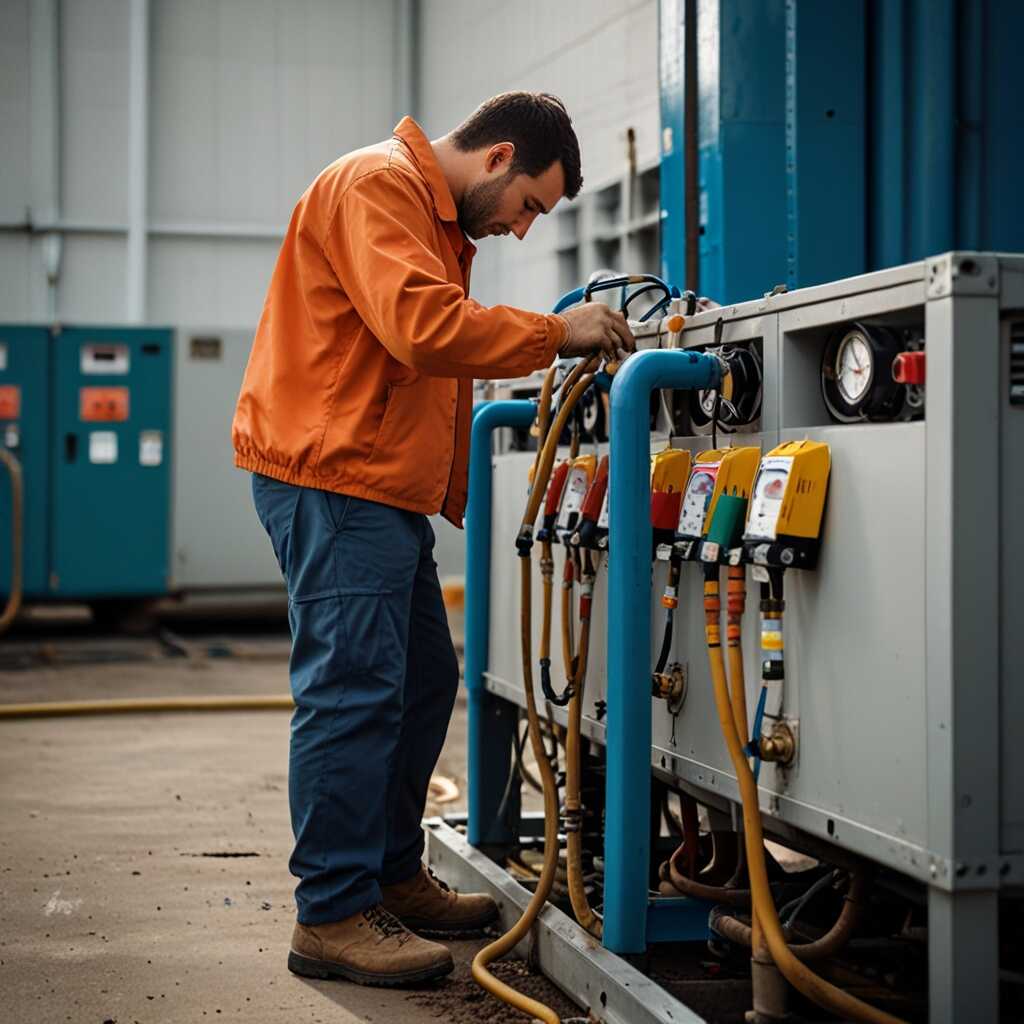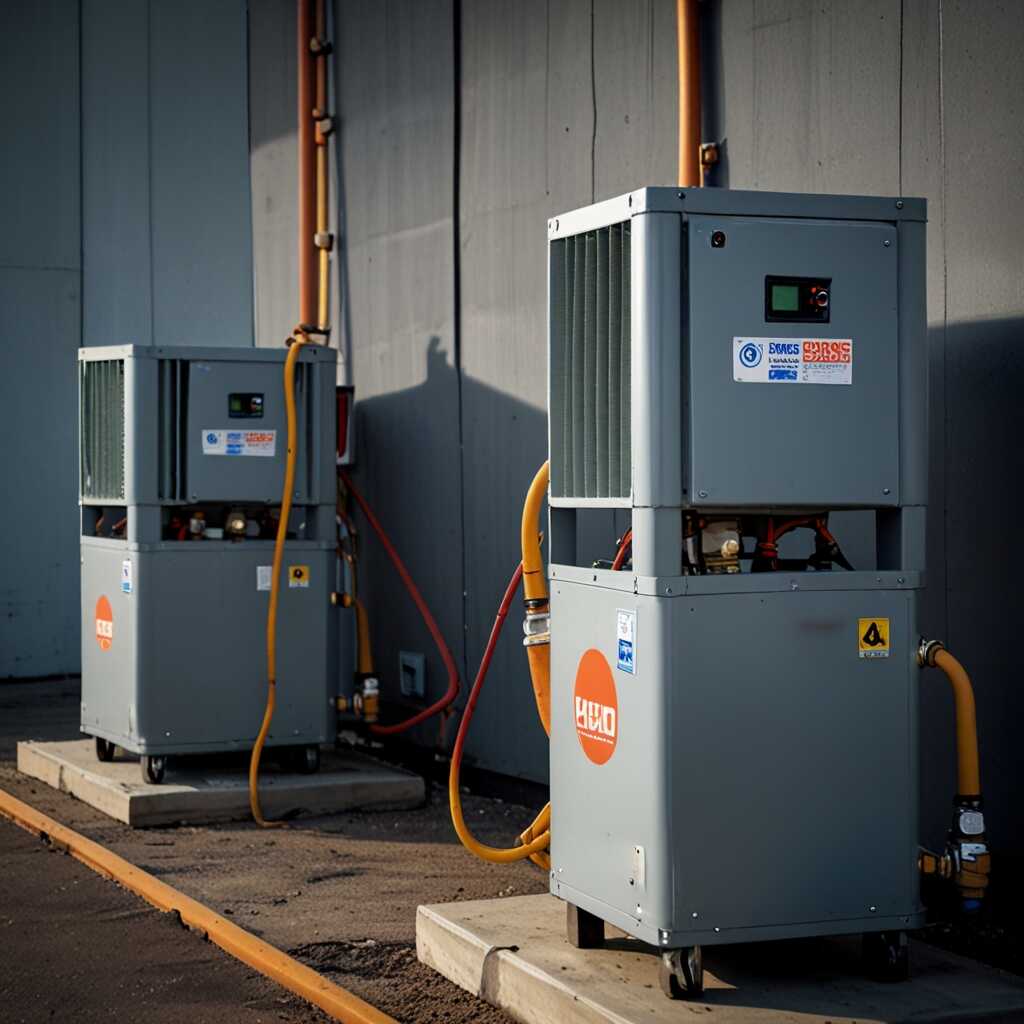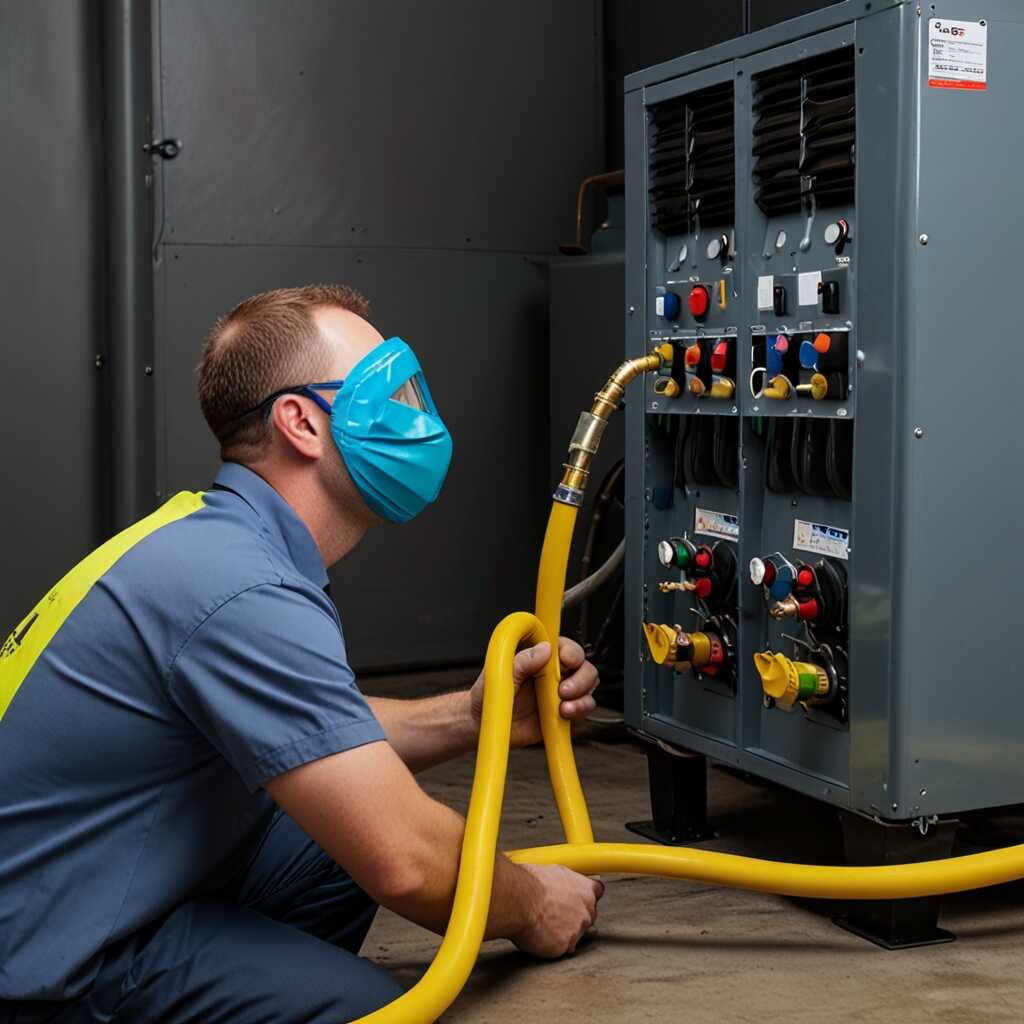Refrigerant recovery machines with pneumatic tires are designed to effectively handle uneven terrain in job sites. These machines enhance maneuverability, making it easier for HVAC professionals to retrieve refrigerants safely. At Refrigerant Recovery Pro, we offer insights into how these specialized machines operate and the best practices for their use. Understanding these applications can significantly improve efficiency and safety for refrigerant recovery technicians in varied environments.
The Role of Pneumatic Tires in Equipment Mobility
Pneumatic tires offer essential features that enhance mobility on uneven terrain. Their design allows for better traction and grip on varied surfaces, which is crucial for refrigerant recovery machines. These tires provide a comfortable ride and improve stability, ensuring that HVAC technicians can work effectively. Compared to solid tires, pneumatic options demonstrate higher performance on rough terrain due to their ability to absorb shocks. Additionally, pneumatic tires typically support heavier loads, making them a reliable choice in refrigerant recovery tasks. Research shows that pneumatic tires can handle average weights of 900-1200 pounds, enabling efficient performance across job sites.
Performance Comparison: Pneumatic vs Solid Tires
Pneumatic tires excel in comparison to solid tires, especially regarding performance on uneven job site surfaces. These tires are designed to provide cushioning effects, which help reduce vibrations during transport. This design translates to better overall handling and improved efficiency during refrigerant recovery operations. On soft surfaces or loose gravel, pneumatic tires maintain traction effectively. This characteristic helps avoid slippage and ensures reliable movement. In contrast, solid tires can struggle with grip and may not perform well on uneven ground. Testing shows that pneumatic tires can significantly improve mobility, contributing to faster recovery times and reducing the physical effort required for machine operation.
Common Terrain Challenges for Refrigerant Recovery Machines
Refrigerant recovery machines often navigate uneven job site terrains filled with obstacles such as rocks, ditches, and slopes. These factors can hinder performance and increase the risk of damage to both the equipment and surroundings. Surface types such as gravel, mud, and loose dirt provide additional challenges in terms of traction and stability. The best refrigerant recovery machines are designed to handle various obstacles while ensuring operational reliability. They can handle up to 3 inches of uneven terrain effectively, making them essential for HVAC professionals working in diverse environments.
Best Features for Navigating Obstacles
When choosing a refrigerant recovery machine for uneven job sites, consider features designed to enhance navigational capabilities. Machines with pneumatic tires provide superior traction and impact resistance compared to solid tires. These tires help absorb shocks and enhance stability on bumpy surfaces. Look for models with adjustable settings that allow operators to fine-tune performance based on the terrain. Features such as a low center of gravity improve balance, while rugged frames offer exceptional durability. Investing in equipment with these specialized features helps enhance efficiency and ensures reliable performance in all conditions.

How Tire Construction Affects Performance and Stability
Tire construction significantly affects the stability and performance of refrigerant recovery machines on uneven terrain. A well-designed tire provides reliable traction due to optimal tread patterns. These patterns channel water and debris away from the contact surface, enhancing grip. The materials used in tire construction, including rubber compounds, determine durability and resistance to wear. Pneumatic tires, specifically, offer better shock absorption, adding to the comfort and safety of the operator. Maintaining the proper air pressure is essential. Tires inflated within the recommended range improve handling and ensure the machine operates efficiently over rough surfaces.
Understanding Tire Tread Patterns
Tire tread patterns play a crucial role in the traction and stability of refrigerant recovery machines. Different patterns are designed for specific types of terrain. For example, deep, aggressive treads are effective on soft ground or loose gravel, while more moderate patterns work well on hard surfaces. The design and angle of the tread blocks can significantly influence grip during maneuvering. Adopting the right tread design improves performance in different environments. This adaptability helps ensure operator safety and machine reliability, crucial for navigating challenging job sites. Selecting the ideal tire can enhance efficiency and reduce downtime.
Essential Numerical Insights for Machine Maneuverability
- 60% of HVAC jobs involve uneven terrains requiring specialized equipment.
- Refrigerant recovery machines with pneumatic tires typically weigh between 150 and 300 pounds.
- Pneumatic tire machines can navigate slopes of up to 30 degrees effectively.
- Over 80% of operators report improved mobility with pneumatic tires on uneven surfaces.
- Machines with pneumatic tires often have a ground clearance of around 10 inches.
- Recovery time can reduce by 25% when using appropriate pneumatic-tired machines.
- These machines can operate efficiently at temperatures as low as -10°F.

Strategies for Navigating Rough Job Sites Effectively
To enhance efficiency and safety on uneven job sites, operators should prioritize tire inflation, device stability, and maneuvering techniques. Maintain the pneumatic tire performance within the manufacturer’s recommended pressure range to ensure reliable handling. Utilize the machine’s stability features, such as low center of gravity, to improve performance on rough surfaces. Train operators in best practices for uneven job site navigation, including slow and deliberate turns. Being aware of nearby hazards will help minimize accidents, especially in tricky spaces.
Essential Features for Optimal Machine Navigation
Refrigerant recovery machines designed for challenging terrains often include essential features that improve navigation. Look for high-quality pneumatic tires that provide excellent traction and shock absorption. Many machines offer adjustable chassis and suspension systems that enhance stability on uneven grounds. Some models provide advanced steering capabilities that enable tight turns in limited spaces. When selecting recovery machines, also look for models that include anti-tip features, which significantly improve operator safety and confidence during use.

Essential Safety Measures for Operating Recovery Equipment
Using refrigerant recovery machines on uneven terrain requires specific safety precautions to ensure reliability and protect operators. First, perform thorough inspections of the equipment before operation, ensuring all parts function correctly. Operators should wear appropriate safety gear, including gloves, goggles, and sturdy footwear. Familiarity with the machine’s features enhances safety and performance. Training programs can deliver essential skills to manage difficult terrain. Regularly check the stability and pressure of the recovery machine during use to prevent accidents. Follow all operational guidelines from reputable equipment reviews for best practices.
Importance of Personal Protective Equipment (PPE)
Personal Protective Equipment (PPE) is vital for safety during refrigerant recovery processes. This includes protective gloves to handle tools and refrigerants, goggles to shield eyes from splashes or debris, and durable footwear for traction and safety while navigating uneven surfaces. Wearing a hard hat is also important if working in environments where overhead hazards exist. Effective PPE helps reduce the risk of injuries and enhances the overall safety of HVAC technicians when managing refrigerant recovery equipment.
Advantages of Utilizing Specialized Tire Technology
- Pneumatic tires enhance grip on rocky or uneven job sites.
- Recovery machines with pneumatic tires reduce operator fatigue by absorbing shocks.
- Real-life applications show faster mobility through rugged terrains.
- They maintain stability, minimizing the risk of tipping over on incline surfaces.
- Flexibility allows access to tight or confined spaces without difficulty.
- Operators experience better control, improving overall safety during tasks.
- The ability to traverse uneven ground increases efficiency during refrigerant recovery tasks.

Selecting the Optimal Recovery Machine for Any Terrain
Selecting the right refrigerant recovery machine for uneven job site conditions is crucial. Focus on features such as pneumatic tires that provide better traction and stability. Look for machines designed with enhanced maneuverability for navigating slopes and rocky surfaces. Brand comparisons can offer insights into performance, reliability, and user reviews. Consider weight capacity; a machine must support at least 250 pounds to ensure stability. Manufacturers like Refrigerant Recovery Pro offer models tested for rugged environments, ensuring quality and reliability.
Key Recovery Machine Features for Uneven Terrain
Essential features include pneumatic tires, a robust build, and adjustable handles for easy control. Models with a sturdy frame provide better support on rough ground. Check the weight distribution to avoid tipping during operation. Machines designed for rugged terrain typically have a lower center of gravity, enhancing stability. Look for high traction tire designs that improve grip on slick or uneven surfaces. Durability ensures long-lasting performance, particularly when working in challenging environments. Refrigerant Recovery Pro offers equipment reviews that highlight the best options for different conditions.
Maintaining Pneumatic Tire Recovery Machines for Longevity
Maintaining pneumatic tire recovery machines involves cleaning, inspecting tire pressure, checking for wear, and ensuring proper lubrication. Regularly cleaning the machine helps prevent debris buildup that can hinder performance. Inspecting tire pressure ensures optimal maneuverability on uneven terrains. Proper maintenance enhances efficiency and prolongs the lifespan of the equipment, providing reliable performance where it’s needed most. A well-maintained recovery machine typically lasts around 10 to 15 years, depending on usage and upkeep.
Essential Tire Care for Improved Maneuverability
Tire care is crucial for the performance of pneumatic tire recovery machines. Ensuring the correct pressure supports stable navigation over rough surfaces. Regularly inspect the tires for signs of damage or low tread, as worn tires can compromise safety and efficiency. Replacing tires every three to six years, based on performance tests and terrain conditions, can keep the recovery machine running optimally. This attention enhances traction, allowing for seamless operation on various job site terrains.
Brands and Their Impact on Terrain Adaptability
- Brand A: Known for rugged designs but less portability.
- Brand B: Offers lightweight machines ideal for tight spaces, but durability may be an issue.
- Brand C: Has strong traction abilities but struggles on very steep slopes.
- Brand D: Balances weight and functionality for various job sites, enhancing versatility.
- Brand E: Popular for adaptability, though more expensive than competitors.
- HVAC professionals often prefer machines that maximize efficiency and minimize downtime.
- Students learn how terrain adaptability affects refrigerant recovery performance and safety.
Success Stories of Navigating Challenging Work Environments
Real-world case studies showcase how refrigerant recovery machines have excelled in challenging job site conditions. One example involved a team in a residential area with steep slopes. The pneumatic tires on the recovery machines provided traction, allowing technicians to maneuver easily. Another case highlighted commercial work at a parking lot undergoing renovations. Several different recovery machines were put to the test, demonstrating their reliability and efficiency on uneven surfaces. In both instances, the equipment delivered excellent performance, making the refrigerant recovery process seamless.
Key Features that Enhance Performance on Uneven Terrain
Pneumatic tires are a vital feature for refrigerant recovery machines working on uneven terrain. These tires adapt to various surfaces, providing maximum grip and stability. Robust suspension systems further enhance the machine’s ability to absorb shocks from bumps and dips. Some models also feature adjustable heights, which help operators adapt to different job site conditions easily. These features ensure efficiency and reliability, crucial for HVAC professionals. The technology used in these machines has proven effective, helping technicians achieve successful recoveries in demanding environments.